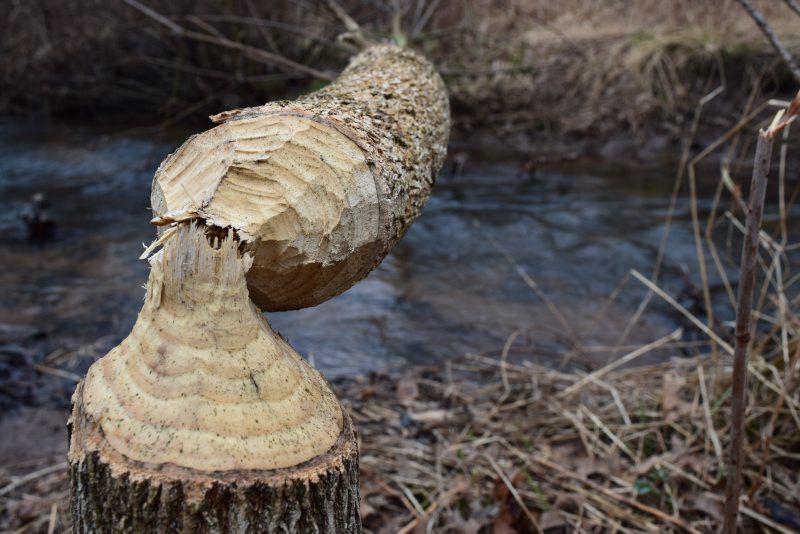
“A Modest Proposal” was published anonymously in 1729 by Jonathan Swift and shocked readers with the [satiric] suggestion that the problem of too many Irish poor children could be solved if their parents simply sold them as a food source to rich people.
A young healthy child well nursed, is, at a year old, a most delicious nourishing and wholesome food, whether stewed, roasted, baked, or boiled; and I make no doubt that it will equally serve in a fricassee, or a ragout.”[1]
Long before Trump said Mexicans were rapists and murderers, Swift hated the way people were treating the poor Irish and more particularly the way that people wrote about their plight as if one single solution could solve everything. One of the subtle victories of the pamphlet was that it shocked and enraged the reader so much that they ended up hating the narrator and feeling sorry instead for the Irish.
Let’s hope. Because yesterday New Hampshire NPR podcast on beavers from “Outside In” centered on a thoughtful retired mid-wife who solved her pesky beaver problem by deciding to eat them.
No really.
“For seven years I said, you can’t kill them, you have to outwit them. That’s back when I thought you could actually outwit a beaver, but you can’t.”
The paradigm under which we currently operate is called the American system of wildlife management, under which wildlife is a commonly owned resource, and through regulation we decide how many animals we will kill. Are deer eating the shoots off of too many saplings out in the forest? Increase the number of deer hunting permits issued. Are farmers complaining about losing livestock to coyotes? Relax limitations on hunting them. Are there so many beaver that they are expanding wetlands until they flood wells and roads? Call in trappers to reduce beaver populations in that location.
This ensures that the population stays below what is called the “biological carrying capacity” which is a fancy science-y way of saying “how many beaver the land can sustain.” Pat Tate is a big believer in keeping animal density low, because he believes it makes the animal’s lives better.
Pat said, “As I’ve reduced numbers in the wetlands, and went back subsequent years to trap, the amount of scarring and bite-marks on the beaver decreases. So the individual animal’s health increases.”
And trappers I’ve spoken to hear a lot of hypocrisy whenever they hear people call trapping immoral. For instance, a trapper from Southern New Hampshire, Jeff Traynor, points out there isn’t the same outrage at housing developments or highways or parking lots: forces that have just as much to do with keeping beaver populations low.
“We are the most invasive species on the planet, there’s no doubt about it,” he told me, “As we encroach more we’re pushing them. So where is that overflow going? There’s only so many places that they can go. It comes to a point where you can say, well let’s just let nature take its course, or you can say, as human beings can we manage this creature with moral wisdom?”
Two things I’m SURE trappers possess an abundance of: Morality and Wisdom. P-uleeze! If you have time go listen to the whole thing, because it is actually stunning how often it is incorrect. The story didn’t get any better when he talked to our friends Skip Lisle or Art Wolinsky either.
But this “moral wisdom” argument, just doesn’t do it for many beaver believers. Skip Lisle, founder of Beaver Deceivers International, has heard this argument for years in his line of work, and doesn’t buy it. “You know, you always hear, we have to kill the beavers so they don’t get hungry. And if you were an individual beaver, you can imagine which choice they would choose if they had one to make, right? Would you rather be hungry or dead?”
The proponents of restricting beaver trapping often point out that while some management decisions are based on ecosystems science—with government biologists going out and to try to estimate how many animals the land can sustain— other times, the decision is based on our willingness to tolerate animals. This is, almost euphemistically, what we call the “cultural carrying capacity.” And for beavers, it’s often that cultural limit, and not the actual limits of the habitat, that they bump up against.
Skip and his disciples argue they can increase society’s tolerance for beaver by keeping the two species from coming into conflict. Beavers’ damming instinct is triggered by running water, and by using a clever arrangements of grates, culverts, and drainage pipes, Skip keeps beaver far enough away from the running water that they don’t get the urge to start building a dam.
By putting in this type of “fixed protection” whenever a conflict arises, Skip argues we can have the best of both worlds: a growing beaver population and an infrastructure that isn’t submerged under beaver ponds. For him, the argument that trapping leads to a healthier population is beside the point.
Good for you Skip, I’m glad you tried valiantly to elevate this beaver HIT piece. But of course the narrator visits next the plight of Massachusetts where the mean compassion-isitas outlawed body crushing traps in 1996 and the beaver population exploded, because no trappers! (Never mind that no one IS or WAS counting the beaver population in MA or anywhere and any time threats to human property is at stake the same traps can be used anyway.)
Then he trots faithfully back to the beaver-eating midwife who bemoans that she tried installing a beaver deceiver AND a beaver baffler and they didn’t work! So the plucky gal picked up her fork and got to work.
Carol Leonard, who started off our story, spent seven-years trying to figure out how to fool the beavers on her property. “In my naivete I said oh well we’ll try these beaver deceivers and these beaver bafflers and all these do-hickers,” she recalled. But eventually she gave up and apprenticed with a trapper, and started to trap out the animals that threatened her property.
“We are meat eaters, you know, we are hunter gatherers, it’s part of who we are. And so to be able to turn a blind eye to that is just a blind eye,” she said. She applauds animal rights activists, but says she thinks their efforts are better spent protesting concentrated animal feeding operations, or other places where animals live short and miserable lives before heading to our plates. “I think the traditions of hunting and trapping in New England are good, healthy traditions. And I can’t talk against hunters… I can’t. I’m a meat-eater.”
Carol says she has trapped somewhere in the neighborhood of 30 beavers from her property, and while many still remain just downstream, the pond that was threatening her septic setback is no longer growing. In 2015, she and her husband were able to start construction and their home, now completed, is gorgeous, judging from a recent photo spread done by Down East Magazine.
That’s right, You know the old saying: if you can’t Beat ’em – Eat’em.
I don’t know about you but I’ve reached my CULTURAL CARRYING CAPACITY for stupid-ass reporters like this who repeat beaver bullshit even though they have the real answers RIGHT at their fingertips. A reporter with access to talk to experts like Skip Lisle or Ben Goldfarb but still clings to the bitter laments of trappers and fish and game instead. Ben told me in an email last night that in his interview with Sam Evans-Brown, the reporter said that he had been told “flow devices only work 10% of the time”. So of course, when midwife said it didn’t work, he believed it. Why would he read any of the articles citing their success OR interview Dr. Glynnis Hood who has been using them with great success OR talk to someone Skip had done an installation for a decade ago and ask whether it actually worked.
Details Details.
It’s all comes down to real estate. Beavers are in our WAY and we deserve to kill them, didn’t you realize? And besides who needs clean water anyway?
“I grant that this food will be very dear and therefore more proper for the landlords, who, as they have already devoured most of the parents, seem to have best title to the children.”




![tumblr_inline_onxvork7Hw1uccfnw_500[1]](https://www.martinezbeavers.org/wordpress/wp-content/uploads/2017/04/tumblr_inline_onxvork7Hw1uccfnw_5001.jpg)



 Beavers are found across much of North America, almost anywhere there’s water and wood. They are well-established in most areas of Pennsylvania.
Beavers are found across much of North America, almost anywhere there’s water and wood. They are well-established in most areas of Pennsylvania. Dubbed beaver dam analogues, these structures can be built with hand labor. Even volunteers and children can get involved — no heavy machinery required.
Dubbed beaver dam analogues, these structures can be built with hand labor. Even volunteers and children can get involved — no heavy machinery required.







































